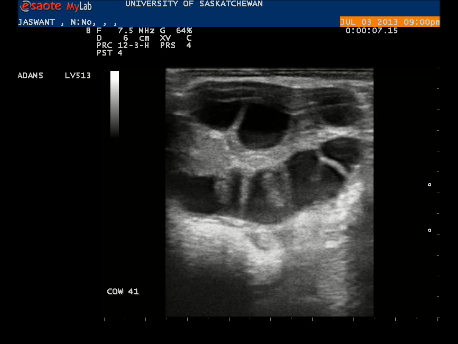What makes a good egg?
- Serena Caunce
- Jun 18, 2020
- 4 min read
Updated: Oct 4, 2020
Some women consider freezing their eggs while they are still young — but how do we know what makes a good egg versus a bad one?
This blog post was originally posted on my college's website (WCVM Today). During my summer between first and second year I received a scholarship in the Merial-Merck Veterinary Scholar's program (it has since changed to the Boehringer Ingelheim Veterinary Scholars Program). As part of our summer research, we were asked to write an article. In it, I interviewed my mentor PhD candidate Dr. Fernanda Dias. Dr. Dias now heads the laboratory at the human fertility clinic in Saskatoon (Aurora Reproductive Care). I thought this was a good time to dig up this article from the past. It was posted on my research group's site, and still happens to be there!
Originally posted April 2014.
As a woman who is over 30 and childless, I can identify with other females my age who are in that inevitable countdown toward 40 and trying to decide whether we should have children before our fertility declines.
Some women consider freezing their eggs while they are still young — but how do we know what makes a good egg versus a bad one?
I learned more about this topic as a summer research student in Dr. Jaswant Singh's research lab at the Western College of Veterinary Medicine (WCVM). Singh and his research team have been using assisted reproductive techniques in cattle as a model for human reproduction to determine what characteristics make a good quality egg.
Characteristics of a good quality egg include oocyte competence — the ability of the oocyte (the egg) to be fertilized and develop into an embryo.
Each oocyte grows within a follicle in the ovary and microscopic changes occur in an oocyte that are related to this environment. Follicles are stimulated to grow under the influence of follicle stimulating hormone (FSH). Before ovulation, there is an increase in luteinizing hormone (LH), a hormone that an oocyte needs to continue its development before fertilization.
If the levels of LH and estrogen are appropriate the follicle will release the oocyte, while in the absence of these hormones the follicle regresses and ovulation does not occur.
We used these ideas in a superstimulation protocol to cause many follicles to grow to a dominant size so we could have several oocytes to work with. Superstimulation is done by injecting FSH to higher than normal levels to have more pre-ovulatory follicles.
Our current project is building on that of Dr. Fernanda Dias' work for her PhD program that she recently completed in the WCVM’s Department of Veterinary Biomedical Sciences. Dias was conducting research to determine the effects of follicular aging on granulosa cells in follicles of cattle after superstimulation.
She compared a conventional, four-day superstimulation protocol of FSH injections with a seven-day protocol of FSH injections and discovered that many more follicles reached dominant size using the longer treatment.
Additionally, she had another group of cattle that only received four days of FSH, but underwent a withdrawal period prior to injection of LH to initiate maturation of the oocytes.
What Dias found was these oocytes were not as competent as the oocytes that matured in the seven-day FSH injection group. In other words, the FSH withdrawal prevented the oocytes from developing into embryos.
Previous research investigations conducted by Singh and his team have shown that women after 35 years old and cows in their early teens share similarities in follicular development, reproductive hormone levels, embryo development and oocyte quality.
“There are some things that are specific, but in general, they follow the same principles,” says Dias. “We use the bovine as a model for aging. A lot of projects use bovine or other species as a model.”
In the current study, we used a similar superstimulation protocol then using a fluorescent marker that is converted by reactive oxygen species (ROS) which we can visualize on a confocal microscope.
“Oxidative stress is when the cell is not going through the process right, not completing the whole process of respiration. When this happens, they start to produce ROS . . . and that’s toxic for the cell,” says Dias. “Evaluating how much ROS we have in the cell will show how healthy that cell is.”
The cell has its own ability to produce glutathione, an enzyme that will remove ROS. Evaluating the amount of glutathione is a future endpoint of the project.
“If you have a lot of ROS build-up in the cell, the cell will try to produce glutathione as much as it can. If it cannot cope, then the cell will go through apoptosis and die,” says Dias.
Now that Dias has completed her graduate program at the WCVM, she is working as a lab director at an in vitro fertilization clinic — Saskatoon’s Aurora Reproductive Care — that assists women who are having infertility problems.
While “physiology is physiology,” the jump from reproductive science in animals to that in humans will still be quite a change for the scientist: “I think the biggest challenge that I will face is working with women who have problems with fertility. Right now we have cows that . . . don’t have any problems with their fertility. So going to work with women that have fertility problems I think will be a challenge.”
While I still have time to decide whether I need to visit Dr. Dias at the fertility clinic to determine if my eggs are competent, I believe that it’s important for women my age to be informed about this concept.
Serena Caunce of Calgary, Alta., is a second-year veterinary student who participated in the WCVM’s Undergraduate Summer Research and Leadership program in 2013.
To read my first published article head here.













댓글